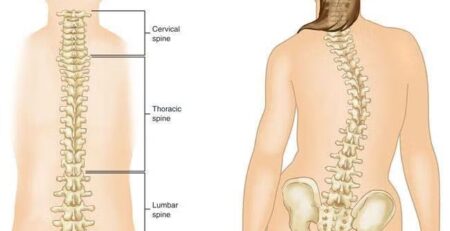A face-lift is a cosmetic surgical procedure to create a younger look in the face. The procedure can reduce sagging skin. It can also help smooth folds of skin on the cheeks and jawline. A face-lift is also called a rhytidectomy.
During a face-lift, a flap of skin on each side of the face is pulled back. Tissues below the skin are altered, and excess skin is removed. This gives the face a more youthful shape.
A neck lift is often done as part of a face-lift. It reduces fat and sagging skin on the neck.
A face-lift won’t correct damage from sun exposure, such as fine lines and wrinkles. Other cosmetic procedures can address the look or quality of the skin itself.
Why it’s done
The look and shape of the face changes with age. The skin becomes looser and doesn’t snap back as easily. Fat deposits decrease in some areas of the face and increase in others.
A face-lift can address these age-related changes:
- Sagging appearance of the cheeks
- Excess skin at the lower jawline
- Deep skin folds from the sides of the nose to the corner of the mouth
- Sagging skin and excess fat in the neck (if the procedure includes a neck lift)
- A face-lift isn’t a treatment for fine wrinkles, sun damage, creases around the nose and upper lip, or uneven skin color.
Risks
A face-lift surgery can cause complications. Some can be managed with appropriate care, medication or another surgery. Long-term or permanent complications are rare but can cause changes in appearance. The risks include:
Hematoma. A collection of blood (hematoma) under the skin is the most common complication of a face-lift. A hematoma causes swelling and pressure. It usually forms within 24 hours of surgery. When a hematoma forms, prompt treatment with surgery helps prevent damage to the skin and other tissues.
Scarring. Incision scars from a face-lift are permanent. However, they’re typically hidden by the hairline and natural contours of the face and ear. Rarely, incisions can result in raised scars.
Injections of a corticosteroid medication or other treatments might be used to improve the appearance of scars.
Nerve injury. Injury to nerves is rare. An injury can affect nerves that control sensation or muscles. This effect may be temporary or permanent. Temporary loss of feeling or not being able to move a muscle of the face can last a few months to a year. It could result in an uneven facial appearance or expression. Surgery may offer some improvement.
Hair loss. You might experience temporary or permanent hair loss near the incision sites. Permanent hair loss can be addressed with surgery to transplant skin with hair follicles.
Skin loss. Rarely, a face-lift can interrupt the blood supply to facial tissues. This can result in skin loss. Skin loss is treated with medications and appropriate wound care. If necessary, a procedure can reduce scarring.
Like any other type of major surgery, a face-lift poses a risk of bleeding or infection. There’s also a risk of having a reaction to the anesthesia. Certain medical conditions or lifestyle habits also can increase the risk of complications.
The following factors may present a risk of complications or result in unfavorable results. Your surgeon may advise against a face-lift in these cases:
Blood-thinning medications or supplements. Taking medications or supplements that thin the blood can affect the blood’s ability to clot. They can increase the risk of hematomas after surgery. These medications include blood thinners, aspirin, nonsteroidal anti-inflammatory drugs (NSAIDs), ginseng, Ginkgo biloba, fish oil and others.
Medical conditions. If you have a medical condition that prevents blood clotting, you won’t be able to have a face-lift. Other conditions may increase the risk of poor wound healing, hematomas or heart complications. They include poorly controlled diabetes and high blood pressure.
Smoking. Smoking increases the risk of poor wound healing, hematomas and skin loss after a face-lift.
Weight changes. If you have a history of repeated weight gain and loss, you may not be satisfied with the long-term outcome of the surgery. Weight changes affect the shape of the face and condition of the skin.
How you prepare
Initially, you’ll talk to a plastic surgeon about a face-lift. The visit will likely include:
- Medical history and exam.Prepare to answer questions about past and current medical conditions. Also discuss previous surgeries, including previous plastic surgeries. Be sure to note any complications from previous surgeries. Also let the plastic surgeon know if you have a history of smoking, drug use or alcohol use.
Your surgeon will perform a physical exam. The surgeon also may request records from your health care provider. If there are concerns about your ability to have surgery, you may be asked to meet with a specialist.
- Medication review.Provide the names and dosages of all the medications you regularly take. Include prescription drugs, nonprescription drugs, herbal medications, vitamins and other dietary supplements.
- Facial exam.Your plastic surgeon will take photos of your face from different angles and close-ups of some features. The surgeon will also examine your bone structure, face shape, fat distribution and quality of your skin. The exam will help determine your best options for face-lift surgery.
- Your surgeon will ask questions about what you expect from a face-lift. The surgeon will explain how a face-lift is likely to change how you look. You’ll also learn what a face-lift doesn’t address. A face-lift doesn’t affect fine wrinkles or an imbalance in the shape of the face.
Before a face-lift:
- Follow medication directions.You’ll receive instructions about medications to stop taking before surgery and when to stop them. For example, you’ll likely be asked to stop taking drugs or supplements that thin the blood at least two weeks before surgery. Ask which medications are safe to take or whether the dosage should be adjusted.
- Wash your face and hair.You’ll likely be asked to wash your hair and face with a germicidal soap the morning of the surgery.
- Avoid eating.You’ll be asked to avoid eating anything after midnight the night before your face-lift. You will be able to drink water and take medications that have been approved by your surgeon.
- Arrange for help during recovery.If your face-lift is done as an outpatient procedure, make plans for someone to drive you home after surgery. You’ll also need help the first night after surgery.
What you can expect
A face-lift can be done in a hospital or an outpatient surgical facility.
Before the procedure
Sometimes the procedure is done with sedation and local anesthesia, which numbs only part of your body. In other cases, general anesthesia — which puts you in a sleep-like state — is recommended.
During the procedure
In general, a face-lift involves elevating the skin and tightening the tissues and muscles. Fat in the face and neck may be sculpted, removed or moved. Facial skin is then re-draped over the newly repositioned contours of the face. Excess skin is removed, and the wound is stitched or taped closed.
The incisions for the procedure depend on the techniques that will be used and the patient’s preferences. Options include:
A traditional face-lift incision starts at your temples in the hairline. It continues down and around the front of the ears. It ends behind the ears in the lower scalp. An incision might be made under the chin to improve the appearance of your neck.
A limited incision is shorter and begins in the hairline just above the ear. It wraps around the front of the ear but doesn’t extend all the way into the lower scalp.
Neck lift incision starts in front of the earlobe. It continues around the ear into the lower scalp. A small incision also is made under the chin.
A face-lift generally takes 3 to 6 hours. But it might take longer if other cosmetic procedures are done at the same time.
After the procedure
- After a face-lift, you may experience:
- Mild to moderate pain
- Drainage from the incisions
- Swelling
- Bruising
- Numbness
Contact your doctor immediately if you have:
- Severe pain on one side of the face or neck within 24 hours of surgery
- Chest pain
- Irregular heartbeats
- The incisions will likely be covered with bandages. Bandages provide gentle pressure to minimize swelling and bruising. A small tube might be placed under the skin behind one or both ears to drain excess blood or fluid.
In the first few days after surgery:
- Rest with your head elevated
- Take pain medication as recommended by your doctor
- Apply cool packs to the face to ease pain and reduce swelling
- Follow-up appointments
You will have several follow-up appointments scheduled during the next two months after surgery. They will include the following:
- The day after surgery, the surgeon will likely remove the drainage tube. The surgeon will also likely apply antibiotic ointment to the incisions and place new bandages on your face.
- Two to three days after your face-lift, you may be able to switch from wearing bandages to wearing an elasticized facial sling.
- About a week after surgery, your health care provider will remove the stitches and assess the wound.
- Later visits will likely be scheduled to monitor your progress.
- Self-care
Self-care at home during the first three weeks will help your recovery and lower the risk of complications:
- Follow wound care instructions as directed by your surgeon.
- Do not pick at crusting scabs that develop on your wound.
- Follow instructions on when you can begin using shampoo and soaps and what kinds to use.
- Wear clothes that fasten in the front. Avoid clothes that are pulled over the head.
- Avoid excessive pressure or motion on and around the incisions.
- Avoid using makeup.
- Avoid vigorous or aerobic activity or sports.
- Avoid direct sun exposure to the incision for three weeks. Use a sunscreen of SPF 30 or higher thereafter.
- Avoid coloring, bleaching or perming hair for at least six weeks.
- In the weeks after a face-lift, you might style your hair to hide signs of the incision. You may choose to delay attending major social events for a couple of months.
Results
A face-lift can give your face and neck a more youthful look. But face-lift results are not permanent. With age, the skin on the face may begin to droop again. In general, a face-lift can be expected to last 10 years.









Leave a Reply